In this article, we take you through the options you need to consider before you start work on making a bird table. The materials and tools you will need. We give you plans and instructions for making a simple table, and resources for more elaborate options.
How to Make a Bird Table
Before you start getting together materials and tools, you have choices to make.
How Big?
Size matters with bird tables. Too small and there won't be space for many birds to feed together, plus the seed will get knocked off onto the floor all the time. Too big and you will create a haven for bigger birds like pigeons who may scare the smaller birds off.
And the bigger your table is, the bigger its foot or other support will need to be to keep it stable.
A good size to aim for, for the feeding platform of your bird table is 12 by 18 inches or 15" square. This will give plenty of space for feeding without being too big or cumbersome to support.
How Tall?
The height of your bird table is important too. If it's too tall, feeding birds like robins and blackbirds will ignore it, and it may be difficult for you to watch from a chair. A very tall bird table on a traditional pole is also more likely to be unstable in high winds.
If it's too low down, it can make your feeding birds a sitting target for cats and other predators.
Ideally, aim for your feeding platform to be 4 to 6 feet above the ground.
How Will Your Table Be Supported?
So the traditional bird table sits on top of a wooden pole, but that isn't your only option, and it certainly isn't the most straightforward option from a DIY point of view.
You could go for a hanging table or wall mounted bird table. This simply replaces the post with a length of chain or rope threaded under the roof.

Or there is the option of mounting your bird table on a wall or fence using a bracket. This is probably the simplest option of all to make.

To Roof or not to Roof?
Twenty years ago, the majority of bird tables didn't have a roof. They were just a platform on a pole. There are less of these around today, and most shop-bought tables come with some sort of roof.
A roof offers some shelter for the birds and will help to keep the food dry. But if you are making your own table, the roof adds a whole load more complexity to the project.

Our simple bird table is a no-roof design and will be just fine in a sheltered position. For those of you looking for more of a challenge, we've included videos instructions for more complex roofed tables.
Accessorise?
You could choose to make your table into a full-blown feeding station with the addition of hooks for hanging feeders, additional feeding platforms or even a birdbath.
If this idea appeals, think carefully about what you are going to add and where. Consider how your accessories are going to affect the stability of the finished table.
Also bear in mind the possibility of ending up with an overcrowded feeding area which may look too busy for more timid birds to approach. Sometimes it's better to spread your feeders out a bit around the garden.
Materials
Wood is the first thing you will need. You could choose to use old scraps of timber if you have them lying around, but bear in mind that the quality of the wood you use will determine how long your table lasts. You should also consider whether the timber you have has been chemically treated, this could be toxic to your birds.
For the platform and roof of your table, we would recommend ½ inch, outdoor or marine quality plywood. This will have been pressure treated and should withstand the weather.
For the supports and other elements of your table, we would recommend you go for construction-grade treated timber, which will usually be some kind of spruce.
Opting for smooth finished timbers will be very slightly more expensive but will save you time on sanding later.
Fixings. You will need a variety of wood screws, nails and brackets, depending on the design you choose. Opt for galvanised steel or brass for best weather resistance.
Wood Glue. Although you will be fixing your table together with screws, it can be useful to have wood glue on hand to hold pieces in place whilst you screw them. If you are using wood glue, be sure to use it sparingly so that it does not ooze out and leave a residue that the birds can get at. It can be toxic.
Wood Treatment or paint. If the timber you use is pressure-treated, it doesn't really need any other finishing. But an additional treatment or paint can help to extend the life of your table, protect from fungus and bacteria, as well as making it look nice. Choose an animal safe treatment or paint, we have a guide here.
Equipment.
- Saw. Ideally, you need a circular saw and a mitre block. You could get away with a hand saw and a protractor, but it's going to be harder work. If like me, you are a bit of a DIY wimp you will be pleased to know that most DIY stores offer a free or low-cost timber cutting service, so you can skip the sewing altogether if you want. Just take your plans with you when you go to buy your wood.
- Drill.
- Screwdriver - powered will make your life easier.
- Pencil.
- Tape measure
- Sand Paper.
- Paint Brush if you are planning to treat your wood.
And you're ready to go!
Simple Bird Table Instructions.
These instructions will allow you to make a simple, open-top, free-standing bird table.
You will Need
- 15" square sheet of ½ inch thick plywood, marine or outdoor quality.
- 10 feet of 2 x 2 inch treated timber, for the post and supports.
- 4 feet of 1x1 inch wooden batten for the table edging
- 8 x 4" angle brackets.
- Galvanised steel or brass wood screws 12 x ¾", 2 x 4 inch (plus screws for the angle brackets which will usually come with them).
- Wood glue
- Wood treatment or paint if using.
Step 1 - Cut the wood.
Cut your sheet of plywood to 15" square.
Cut a 5-foot length from the 2x2" timber. This will be the table leg.
Cut the remaining 5-foot length of 2x2 precisely in half. This will make the feet of your table.
Using your tape measure, find the centre of each of the feet timbers and cut out a section of wood 1" deep by 2" long. You are going to use these cutouts to slot the two feet together to form a cross.

Cut the 1" batten into 4 x 12" sections. You will fix these on to the edges of the table to stop seed falling off.
If you are not confident with sawing, take these instructions with you when you go to buy your timber, and the DIY store should be able to cut it for you.
Step 2 - Assemble the Table Top.
Lightly glue a wooden batten along each edge of the bird table. The battens are shorter than the sides of the table so there will be a gap at each corner to allow any rainwater to drain away.
Use 3 x ¾ inch screws to fasten each batten in place, working from the underside of the table.
Step 3 - Fixing the leg to the table.
Find the exact centre of the table by drawing 2 lintersecting lines across it diagonally from corner to corner.
Drill a small guide hole (i.e. a hole slightly smaller than the diameter of your 4" screw) right through the centre of the tabletop.
Find the centre of the end of the leg by drawing a cross in the same way. Drill a guide hole in the exact centre of the end of the leg.
Repeat the process on the other end of the leg.
Screw the tabletop to one end of the leg, ensuring the screw head sits as flush as possible to the tabletop.
Attach one angle bracket to each side of the leg and the underside of the table. Before you start, check that the screws provided are short enough not to protrude through to the upper surface of the bird table.
Step 4 - Attaching the Feet.
Slot the feet together to form a cross.
Find the centre of the cross, (as above) and drill a guide hole right through the wood.
Line this up with the guide hole on the end of the leg and screw together.
Fix an angle bracket on each side of the leg for extra strength and stability.
Step 5 - Finishing
Sand the table down to remove any splinters or sharp edges and achieve a smooth finish, especially on the tabletop.
If you are using a wood treatment or animal-safe paint, now is the time to do it. Let the table dry off in a shed or garage for 24 hours before putting it out.
And you are good to go.
You will notice that the feet of the table are larger than the tabletop. This should give it good stability in most situations, but if you in a really windy area, you could get a set of anchor pegs for added security.
For a Wall Mounted Table
A wall-mounted version of this table is even easier. Simply leave off the leg and feet. Attach a large shelf bracket to the underside of the table, on one of the long edges and screw to a wall or fence post.
For a Hanging Table
Again, leave off the leg and foot. Drill a hole in each corner of the tabletop. Cut 4 equal lengths of rope or strong cord. Thread one through each hole, knotting underneath to secure. Then simply tie over a branch or bracket.
More Challenges?
If you are a DIY wiz and looking for a bird table design that's a bit more of a challenge, check out these videos.
The Pallet Project: if you are one of those people who love to see just how many things they can make out of old pallets this is the one for you.
A simple table with Roof. These are easy step by step instructions for a simple bird table with the addition of a roof. They use scrap timber, but you could follow the same design and buy new timber.
The Bird Palace. This one comes with plant pot holders and a nesting box in the roof space, and the instructor makes it look reasonably simple to make!
Are you Going To Try Out one of our DIY tables?
Well, I hope we've given you some ideas about how you could make your own bird table.
No one would blame you if you just want to take it easy and buy one. But if you do decide to make your own, we would love to see how it turns out. Leave us a picture in the comments below.
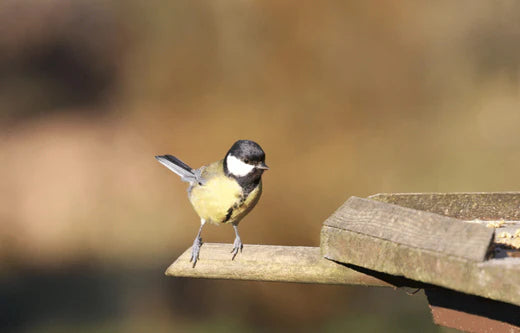


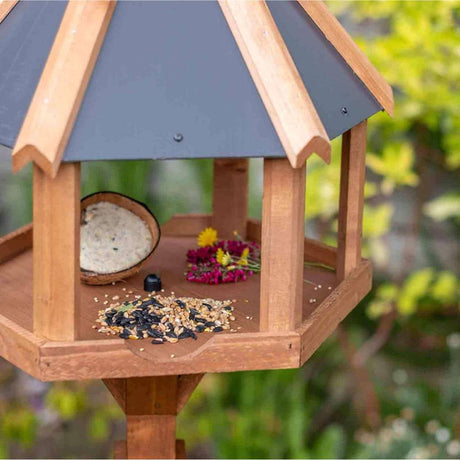

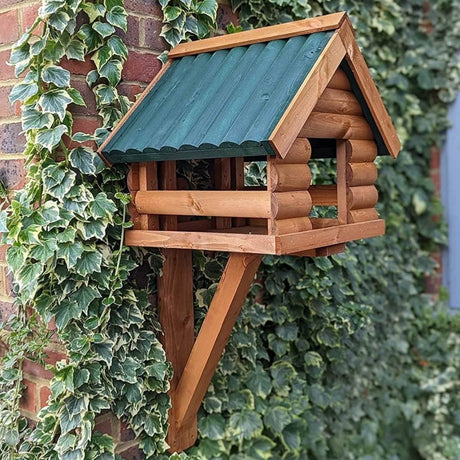
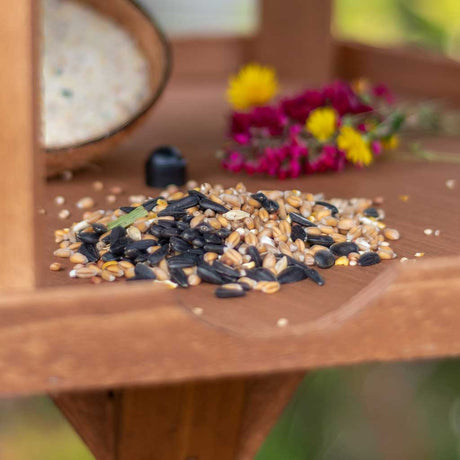
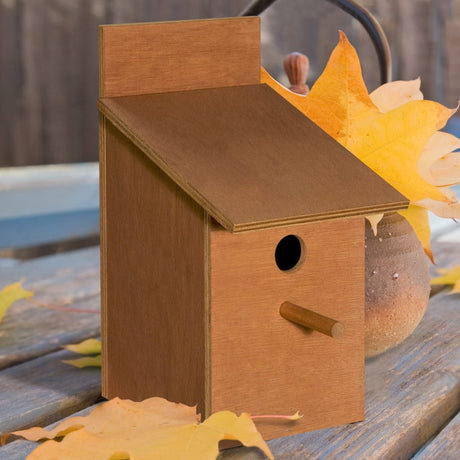

1 comment
I had a DIY table, but it’s now the bath and waterbowl table. I usually DIY, but bought a children’s plastic table for the new bird table and it works very well. The bath is a very large, antique Meakin platter which is just deep enough for even a blackbird to splash in. It was free from the local opportunity shop because it has a couple of inconspicuous chips. I like to think that my birds have an antique Meakin bath.I feed them on small cubes of bread and wheat, which they seem to like. They also have fruit on a DIY fruit holder; a piece of wood with nails banged in. The small amount that they cost is more than repaid by the pleasure they give.